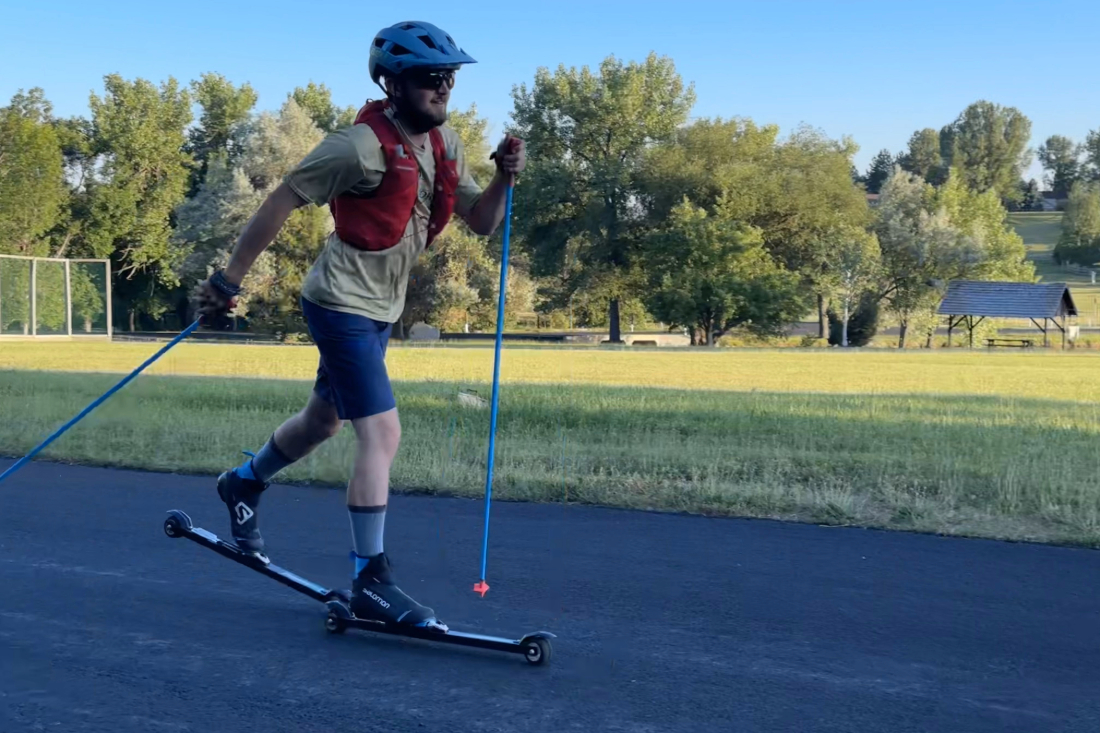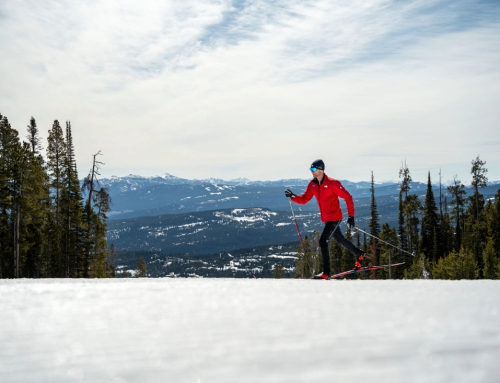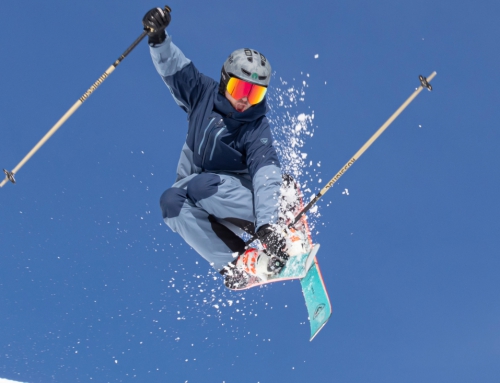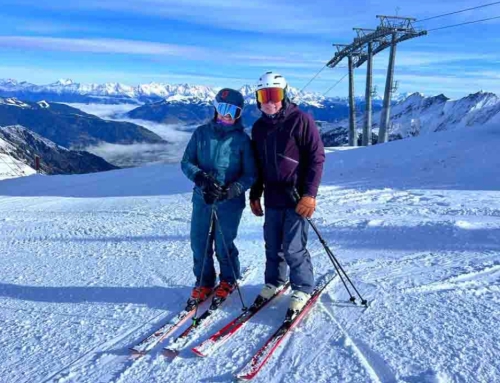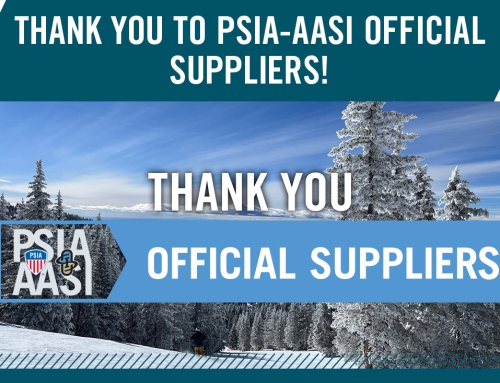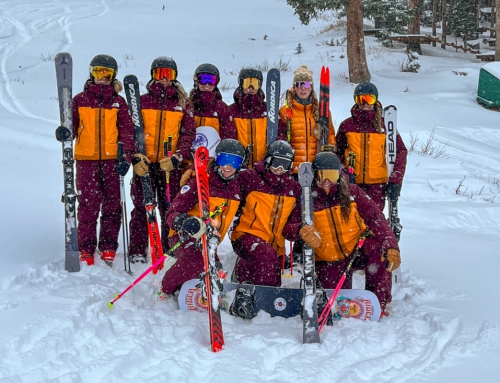Roller Skiing Is the Ideal Offseason Workout for Perfecting Cross Country Ski Technique
New PSIA Cross Country Team member Justin Arndt freeheel skis year-round, whether it’s on snow or on pavement. Here, he shares how and where you can get the most out of an offseason freeheel workout.
Enjoy more offseason workout insight with AASI Snowboard Team member Josh Smith, PSIA Alpine Team member Dominique Vetromile, AASI Snowboard Team member Matt Larson, AASI Snowboard Team member Cori Lambert, PSIA Alpine Team member Katie White, PSIA Telemark Team member Keith Rodney, PSIA Alpine Team member Kevin Jordan, and AASI Snowboard Team member Lyndsey Stevens.
Q: What’s your go-to offseason workout or outdoor sport, and why is it what you like to do?
A: When the crust skiing season ends in early June, we nordies have a privilege that other disciplines don’t have. We can put away our skinny skis and grab our roller skis, which are skinny skis, but only about two and a half feet long with wheels on the bottom.
We switch out our poles for ferrules (sharp, pointed metal poles without any baskets) and go classic or skate ski our local bike paths and country roads. Although the mechanisms of push off are slightly different on the summer equipment (pushing off rubber wheels instead of edges and using a ratchet wheel instead of kick wax), they work in a similar way to allow you to propel yourself across the pavement. I try to get out on my roller skis at least once a week, especially when I’m working down in the city, as it helps me get the cardio going and focus on the same sport I love, just on a different surface.
Q: Do you teach or compete in this sport, or has it led to any great adventures around the world?
A: I don’t teach roller skiing personally, but many high school and college teams across the country teach it as a really solid dryland training, both for the summer and winter in places where there’s little snow.
As an aside, if anyone reading this wants to compete in roller skiing, there are a handful of races across the United States, especially in the Midwest. Roller skiing has led me down some beautiful paths in Colorado, mainly the bike paths in Summit County and around Fort Collins. It’s on my bucket list to roller ski up Mount Blue Sky, a 14er west of Denver. I had a friend do it once and it sounds epic to ski all the way up to 14,271 feet, although you do have to have someone drive you back down because roller skis don’t usually have brakes, so downhills are often a bit scary.
Q: How does this sport help you set, train for, and reach new goals?
A: If there’s something you ran out of time to work on during the winter, you can continue to work at it in the summer on roller skis. I find that roller skis mimic cross country ski technique, yet the two sports are different enough that you’re sometimes able to isolate inefficient things in your technique that you never would have noticed on your snow skis. Personally, they’ve helped me isolate some post-push off-hip rotation in my classic skiing that I’m working to correct.
Q: What’s one take away that can be applied to your work on snow?
A: This summer, I’ll be playing around with my double pole body position so I can figure out some of the best ways to clinic with the membership this winter! It’s fun because you can actually hear the power application of poling when your poles hit the pavement, so I’m getting a good sense of what I like in my double pole body position and how it’s creating outcomes in power application.
Q: How does this prepare you mentally for your work on snow?
A: Roller skis are a lot heavier than cross country skis, weighing in at three to five pounds, compared to cross country racing skis that weigh only two pounds. That means it takes different muscular effort to pick them up and drive forward onto the new ski. To race cross country skiing or even to ski for a long distance takes mental toughness, and there’s nothing like persevering through a distance workout in the hot summer sun that makes you excited to get back on snow in the fall.
Q: Do you have any good offseason reading suggestions you’d like to share?
A: One really good book every skier should read is Jessie Diggins’ Brave Enough. It talks about the path to the first Olympic gold medal in U.S. cross country skiing. Jessie gets really vulnerable in that book about her eating disorder and her journey in competitive sports. It’s a really cool read to understand the recent history of U.S. cross country skiing.
***
Teaching snowsports requires year-round physical preparation. To help keep your edge during the summer and throughout the year, pick up your copy of Fitness for Skiing and Snowboarding.

